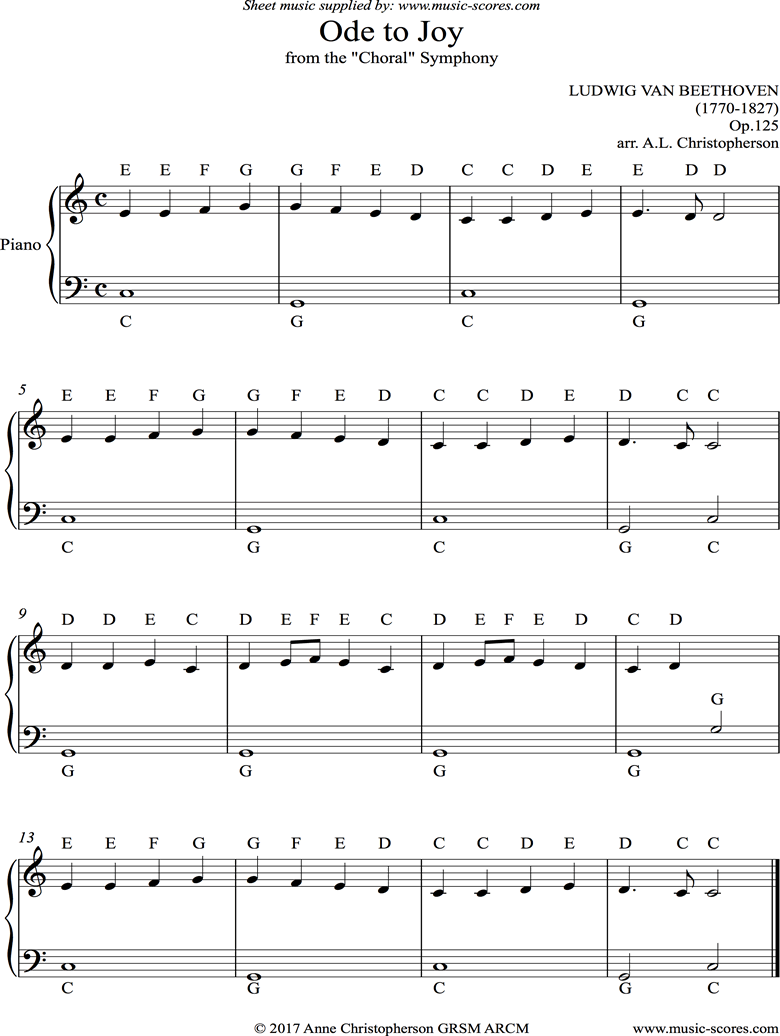Have you ever noticed how certain music can instantly lift your spirits? It’s not just the melody or the lyrics; it’s the way the chords are put together. There’s a reason why some chord progressions seem to radiate joy, while others evoke melancholy. These are the “joy chords,” and understanding their magic can unlock a whole new world of musical appreciation.

Image: musescore.com
I was first introduced to the power of joyful chords while listening to a live performance by my favorite band. As they transitioned into a particular chord progression, a wave of euphoria swept over the entire audience. It was as if some unspoken emotional language had been shared, an instant connection woven through music. That experience sparked my curiosity about these special chords and their ability to touch us so deeply.
Unveiling the Science of Joyful Chords
The concept of “joy chords” isn’t just about subjective feelings; it’s rooted in music theory. Certain chord progressions possess an inherent quality that resonates with our primal emotional responses. This boils down to the interplay of intervals and the way our brains perceive them.
For instance, major chords, with their bright and clear sound, often create a sense of optimism and cheerfulness. They are typically built on a root note, a major third, and a perfect fifth, creating a harmonious and uplifting structure. When placed in specific sequences, these major chords create what we perceive as “happy” music.
The Magic of Major Chords
Major chords are the cornerstones of joyful musical experiences. Their inherent brightness and stability contribute to feelings of upliftment and optimism. Think of a song like “Happy” by Pharrell Williams, where the use of major chords throughout creates a sense of infectious joy. The repeated use of major chords in a simple melody reinforces the feeling of happiness, making it easy for listeners to connect with the song’s message.
Harmonies and Progressions: The Anatomy of Joy
It’s not just the major chords themselves; their arrangement in progressions plays a vital role. A common practice is to use specific chord progressions that build towards a resolving major chord. These progressions often include minor chords, creating a sense of tension and anticipation that is ultimately resolved by the uplifting major chord. This interplay of tension and release is what creates the emotional dynamism that we experience as joy.
Take, for example, the I-V-vi-IV chord progression. The I chord (tonic) is the foundation, while the V chord (dominant) creates tension. The vi chord (relative minor) adds a touch of melancholy, before the IV chord (subdominant) leads back to the resolution of the I chord. This journey through different emotional states within the progression ultimately culminates in a feeling of satisfaction and joy.

Image: ubicaciondepersonas.cdmx.gob.mx
The Evolution of Joyful Chords
The use of major chords and specific progressions for portraying joy isn’t confined to any particular genre or era. From classical music to pop hits, the principles remain the same. Modern music production techniques allow artists to explore new sonic landscapes but the core principles of harmony and emotional resonance remain paramount.
Contemporary music often uses electronic sounds and synths, but the underlying principles of chord construction and progression remain consistent. Electronic music can, in fact, create incredibly rich and complex sounds that are capable of triggering powerful emotional responses, including feelings of joy and euphoria. The use of major chords, clever progressions, and uplifting melodies in electronic music highlights the enduring power of these musical elements.
The Joyful Chord Toolkit: Expert Tips
If you’re interested in exploring the world of joyful chords, here are some tips from a seasoned musician:
- Start with the Major Scale: Familiarize yourself with the major scale. Understand the notes that create major chords, and experiment with different ways to arrange them.
- Embrace the I-V-vi-IV Progression: Master this classic progression. It’s incredibly versatile and can be adapted for different genres.
- Learn to Play by Ear: Listen carefully to your favorite uplifting songs. Try to identify the chords being played and understand how they contribute to the joyful feeling.
FAQs: Unraveling the Joyful Chord Mystery
Q: Can I learn to play joyful chords without any prior musical experience?
Absolutely! There are countless resources available online and in libraries. Learning the basic chords and simple progressions is an excellent starting point.
Q: What if I don’t like the sound of major chords?
That’s perfectly fine! Musical taste is subjective. Explore different chords and progressions. Listen to music that resonates with you and see if you can identify the chords that create the emotions you enjoy.
Q: Is there a single “joy chord”?
There isn’t a single chord that magically evokes joy. Joyful music is created through the interplay of various chords, progressions, and melodies. It’s the combination of these elements that gives rise to this powerful emotional experience.
Joy Chords
The Power of Music: A Call to Action
Joyful chords are more than just musical notes – they are conduits of emotion. By understanding their mechanics, you can deepen your appreciation for music and even begin to create your own joyful soundscapes. So, pick up an instrument, explore these musical building blocks, and unlock your own inner composer!
Are you interested in learning more about the science behind music and emotion or want to try creating some joyful chords yourself? Let me know your thoughts in the comments below.



/GettyImages-173599369-58ad68f83df78c345b829dfc.jpg?w=740&resize=740,414&ssl=1)


